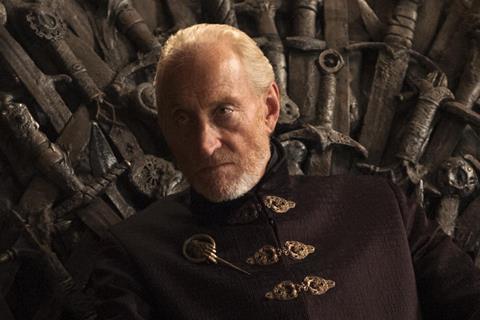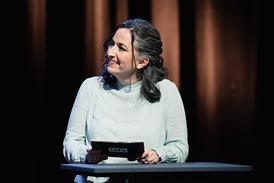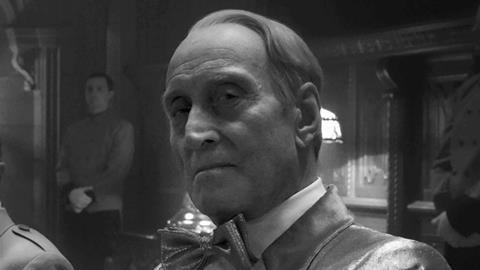Nearly three decades after appearing in David Fincher’s ill‑fated Alien3, Charles Dance is back with the director, playing newspaper magnate William Randolph Hearst in Mank. Screen talks to the actor about his rich run of screen roles
Charles Dance and David Fincher go back a long way, the veteran UK actor having appeared in the director’s first feature, Alien3, almost 30 years ago. That was an infamously troubled shoot for Fincher and the result much-maligned — neither of which affected Dance’s regard at the time.
“I thought, ‘My god, this guy is smart,’” he says. “It was very apparent, even then, that he could talk to any department about their job on equal terms, there wasn’t an aspect of filming that he didn’t know about. He is a film animal from the top of his head to the soles of his feet.”
They had kept in touch only rarely — “the occasional Christmas card” — so Dance was pleasantly surprised when he received an email from the director, preceding a script for Mank and the juicy role of William Randolph Hearst. He didn’t hesitate.
And their second collaboration has fared a lot better than the first. Fincher’s Netflix-produced paean to Hollywood’s Golden Age — scripted by his late father Jack and told through the prism of Herman Mankiewicz’s controversial scripting of Citizen Kane — has six Golden Globe nominations, and is figuring in many other awards.
Dance has only a few scenes, but all integral as they chart the relationship between Gary Oldman’s Mankiewicz and Hearst, the press magnate and inspiration for Kane. On approaching his real-life character, he says: “Principally what I needed was in the script, because it’s one of the best scripts I’ve ever read. And we had two or three weeks sitting round the table talking about it, pulling each sentence apart and not leaving any stone unturned.”
Beyond that, he read about Hearst and found what footage there was of the man speaking. “I tried to pinpoint his accent, which really is very strange. There are elements of southern American, but then there’s this sharp, precise Philadelphia sound, so I put all that into the pot.”
Having discovered the power that a newspaper magnate could wield in 1930s America, Dance thought about recent media moguls, such as Rupert Murdoch and Robert Maxwell. “But I guess I thought more about Donald Trump than anybody else,” he laughs. “And one identifying thing that I could latch onto for Hearst — I bear no resemblance to him physically — is that he did have a rather peculiar hair arrangement, which of course Trump has. So we got a pretty good wig.”
Hearst’s dress sense was all his own. “When throwing his many parties, he was pretty outrageous,” Dance observes. Even in the film’s black and white, his circus costume in the film’s pivotal scene — a fancy-dress dinner upended by the drunken Mankiewicz — looks suspiciously like gold lamé. “Yes! It was something that Elton John would wear… on a subtle day.”
The perfect take
That long, complex scene, taking place in production designer Donald Graham Burt’s recreation of Hearst’s grandiose San Simeon home, epitomises for Dance his director’s perfectionism. “I became more aware this time of David’s eye for composition,” he says. “We were working with four cameras all the time. You set something up and go into a take, and maybe two of the cameras will be right and the other two not quite, so we go again, and then those two are okay but there’s a problem with the other one. So we do take after take after take after take. And then, when he’s happy with the composition, he’ll hone in on the acting.
“So it’s incumbent on all of us to maintain our energy level and focus and concentration. It’s a long process. But although we might moan about it, you don’t moan very much, because you know that we’re contributing to what’s going to be a special film.”
The most takes Dance was involved in for a set-up was “in the upper 30s”, during that dinner scene. “That was very tough on Gary [Oldman]. We got sore arses sitting around for two or three days, but Gary drove that scene, and in every single take he went from beginning to end. It was an extraordinary scene to do.”

Speaking from his London home, Dance is in good form considering he is recovering from Covid-19. “I’m 90% back to normal,” he reports, wryly noting the insidious nature of the virus. “I was at Shepperton Studios doing [Neil Gaiman’s TV series] The Sandman, after that I went to Iceland to do a film [Netflix’s Against The Ice], being tested every day and always coming back negative. Then I get back here and go to do a weekly shop — and I pick it up.”
Work-wise, the actor agrees he has been on a roll, from Lord Mountbatten in The Crown and the stern, dictatorial puritan of Fanny Lye Deliver’d, to roles in Matthew Vaughn’s upcoming The King’s Man and the aforementioned Netflix adaptation of The Sandman.
“The amount of work I’ve had in the last two or three years is remarkable, because I’m 74 now, and as you get older in this business decent parts begin to thin out.” He credits the high demand to his role as the formidable patriarch Tywin Lannister in Game Of Thrones, equating the show’s impact to that of his breakthrough TV series in 1984, Granada’s The Jewel In The Crown.
Despite demand as an actor, Dance is soon to step behind the camera for the first time since 2004’s Ladies In Lavender, for his own adaptation of Alice Thomas Ellis’s The Inn At The Edge Of The World. The film is aiming to shoot later this year, with a cast — previously announced but subject to scheduling — that includes Joanna Lumley, Celia Imrie and Freddie Fox.
Has anything changed in his attitude as he has gotten older? “Not really. I try to do less and less with the work, to demonstrate less. And I’ve been thinking lately that maybe I should get more choosy than I’ve been. I just like working. But I should perhaps have been playing fewer cameos and fronting more films than I’ve had the good fortune to do.”







![The Brightest SunScreen[Courtesy HKIFF]](https://d1nslcd7m2225b.cloudfront.net/Pictures/274x183/3/5/0/1448350_thebrightestsunscreencourtesyhkiff_312678.jpg)

















No comments yet